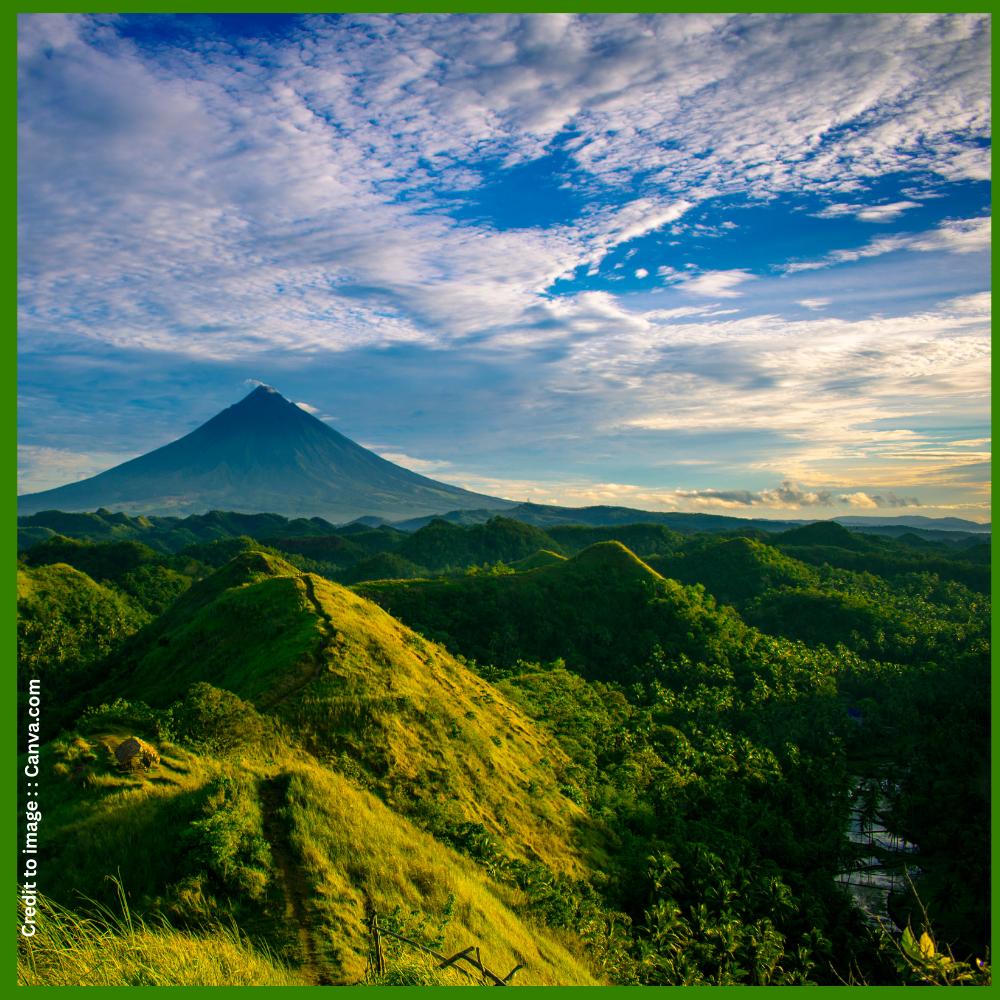The Satpura and Satpura Hills, often overlooked in mainstream travel and geography discussions, are a vital ecological zone in Central India. Spanning across Madhya Pradesh, Maharashtra, and Chhattisgarh, this mountain range plays a significant role in biodiversity conservation, climate regulation, and sustainable agriculture. This article explores the geographical uniqueness, ecological importance, climatic role, and sustainable benefits of the hills—complete with data-driven insights and scientific relevance.
Where Are the Satpura Hills?
The Hills range are stretching across central India. Predominantly in the states of Madhya Pradesh and Maharashtra. The name “Satpura” means “Seven Folds” in Sanskrit, signifying the range’s layered structure. These hills are part of the oldest land formations in India and are home to one of the richest biodiversity zones in South Asia.
Geological and Geographical Significance of Satpura and Satpura Hills
Elevation Range: 300–1,350 meters above sea level
Major Peaks: Dhupgarh Peaks ( Approx. at 1,350 m.Highest point in Madhya Pradesh)
River Systems: Narmada (north), Tapti (south)
Area Covered: Approx. 60,000 sq km
Type of soil : Black cotton soil and red laterite soil which is ideal for agriculture.
Ecological Importance of Satpura and Satpura Hills
The Satpura hills are known for their high endemism and ecological diversity. The region supports tropical moist deciduous forests, dry deciduous forests, and moist peninsular sal forests.
Key Ecological Features:
Hills Range are Natural habitat for Bengal tiger. Also a habitat for Indian giant squirrel and sloth bear.
Migratory bird hotspot.
Acts as a climate buffer by influencing rainfall and temperature in central India.
Role of Satpura and Satpura Hills in Biodiversity And Climate Regulation etc. :
Table 1: Climate Role and Biodiversity Statistics of Satpura Hills
| Parameter | Data | Source |
| Forest Cover percentage | Forest coverage area is 42.3% in Satpura Tiger Reserve | According to MoEFCC Report 2023 |
| Rainfall Influence | Enhances rainfall in southern MP and Maharashtra | IMD Climate Zone Analysis, 2022 |
| Biodiversity Hotspot Status | High (over 1,200 plant species) | Zoological Survey of India |
| Average Annual Rainfall | 1,000–1,600 mm | India Meteorological Department (IMD) |
Satpura Hills and Sustainable Agriculture
The Satpura region’s rich soil and climate support diverse crops such as millets, pulses, and oilseeds. Traditional and tribal farming methods are largely sustainable, requiring minimal irrigation and chemical input.
🌾 Table 2: Agriculture in Region
| Crop Type | Suitable Zone | Benefit |
| Millets | Dindori, Mandla Hills | Drought-resistant, low-input farming |
| Tur Dal | Betul, Hoshangabad belt | Nitrogen-fixing, enhances soil fertility |
| Soybean | Central Plains | High yield in black cotton soil |
Sustainability and Forest Conservation Efforts in Forest Range :
The Satpura Tiger Reserve is a model for integrated wildlife and forest conservation. Community-driven efforts have resulted in eco-tourism and participatory forest management.
🌿 Table 3: Sustainability Indicators of Satpura Region
| Indicator | Data / Status | Source |
| Community Forest Rights (CFRs) | 21,000 hectares under CFR (till 2023) | Tribal Ministry Report, 2023 |
| Ecotourism Revenue (per year) | ₹12.7 crore | Satpura National Park Records |
| Forest Fire Incidents | Reduced by 38% in 5 years | MP Forest Department, 2022 |
Scientific Importance of Hills Range :
The Satpura range is also a living geological museum, offering insights into the ancient tectonic history of the Indian subcontinent. It acts as a biodiversity bridge between the Eastern Ghats and the Western Ghats.
🧪 Table 4: Scientific Research & Conservation Relevance
| Research Focus | Findings | Institution |
| Fossil Deposits | Discovery of 150-million-year-old flora | Birbal Sahni Institute, Lucknow |
| Tiger Movement & Corridor Study | Genetic flow between Pench-Satpura | Wildlife Institute of India (2021) |
| Carbon Sequestration Potential | 3.5 tons per hectare per year | TERI Climate Report 2022 |
Tourism and Cultural Heritage :
The Satpura National Park, Pachmarhi Biosphere Reserve, and Dhupgarh Peak are major attractions. The region is also rich in tribal culture and rock shelters dating back to prehistoric times (Bhimbetka Caves nearby).
Summary
The Satpura and Satpura Hills represent a unique blend of geological antiquity, ecological richness, and sustainable potential. Their influence spans agriculture, climate, conservation, and culture. With strategic conservation efforts and community involvement, these hills are not just a natural wonder but also a living model of sustainability and biodiversity preservation.
FAQs – Frequently Asked Questions :
Q1. What is the significance of Satpura and Satpura Hills in biodiversity?
A: Satpura hills are one of the richest zones of biodiversity in India, supporting endemic flora and fauna and serving as a wildlife corridor.
Q2. Where are the Satpura Hills located?
A: Satpura hills are situated in Madhya Pradesh. Extending into parts of Maharashtra and Chhattisgarh state of Central India .
Q3. How do Satpura hills contribute to agriculture?
A: Their black and red soils support climate-resilient crops like millets, pulses, and oilseeds using low-input traditional farming.
Q4. What makes Satpura Hills important for climate regulation?
A: Dense forests act as carbon sinks and influence regional rainfall patterns.
Q5. Is Satpura a good eco-tourism destination?
A: Yes, places like Satpura National Park and Pachmarhi offer trekking, birdwatching, and heritage tourism with eco-sensitive practices.
References
- Ministry of Environment, Forest and Climate Change (MoEFCC) – Forest Survey Report 2023
- India Meteorological Department (IMD) – Climate Data 2022
- Report of Zoological Survey of India – Biodiversity Baseline Report
- Wildlife Institute of India – Tiger Corridor Connectivity Study, 2021
- The Energy and Resources Institute (TERI) – Carbon Sequestration Assessment, 2022
- Report of Satpura National Park – Annual Eco-tourism Report
- Ministry of Tribal Affairs – Community Forest Rights Progress 2023
- Geological Survey of India – Satpura Stratigraphy and Fossil Record Report
PRAKRITI DARSHAN-NATURE AND ENVIRONMENT MAGAZINE
Prakriti Darshan is a leading Hindi-language magazine and digital platform dedicated to raising public awareness on vital issues related to nature, biodiversity, climate change, sustainable development, and environmental conservation. This magazine represents a unique blend of science, society, and sensitivity—offering a common platform for researchers, students, NGOs, policymakers, nature lovers, and conscious citizens alike.
With thought-provoking articles, inspiring stories, environmental research, impactful projects, and policy perspectives, Prakriti Darshan is a transformative journey toward a greener and more sustainable future.
Let us come together to protect and preserve our planet for generations to come. 🌿🌍
Join us in our mission to protect and celebrate the planet. 🌏💚
Click for more information
- Visit www.prakritidarshan.com for Free Magazine ,Free membership benefits ,offered price magazine @ Rs.1 or Rs.11 only and more ……
- 🎗️Sponsor Prakriti Darshan Magazine – Support our environment mission.
- 📚 Explore the Environment Magazine – Read our latest and past issues.
- ✍️ Read Editor’s Article or Blog – Insightful thoughts from our editorial desk.
- 🌱 Join Membership – Be part of India’s leading green community.
- 🤝 Become an NGO Impact Story Partner – Share your grassroots impact nationwide.
- 🏢 Become a Company Partner – Showcase your CSR, ESG, or sustainability work.
- 👤 Become an Individual Partner – Volunteer, write, and raise your green voice.
- 📢 Advertise with Us – Reach eco-conscious readers across India.
- Eco Trails Newsletter
- Donate for “Hari Ho Vashundhara & Har school Hariyali “ Plantation campaign Associated Partner NGO :GDSS NGO www.gdssngo.org
BALA DATT SHARMA,
MANAGING EDITOR ,
PRAKRITI DARSHAN-NATURE AND ENVIRONMENT MAGAZINE
- Yamuna River- Lifeline of North India :A Scientific, Agricultural, and Environmental Perspective - July 14, 2025
- Jurassic World Rebirth Breaks Box Office Records : Global Box Office Revenue $1.5 Billion (And rising) Globally with a Roaring Environmental Message - July 14, 2025
- African Elephant: Facts, Types, Scientific Data, and Why Their Survival Matters for Our Planet - July 13, 2025







